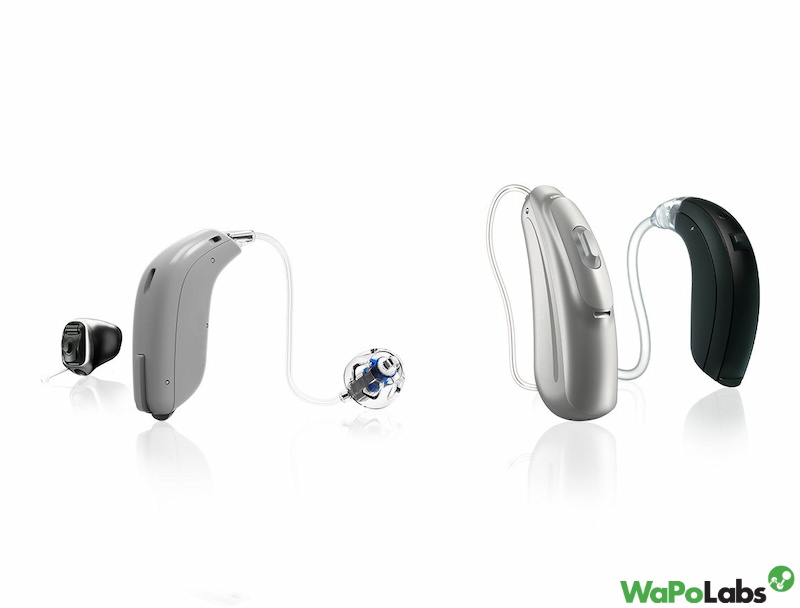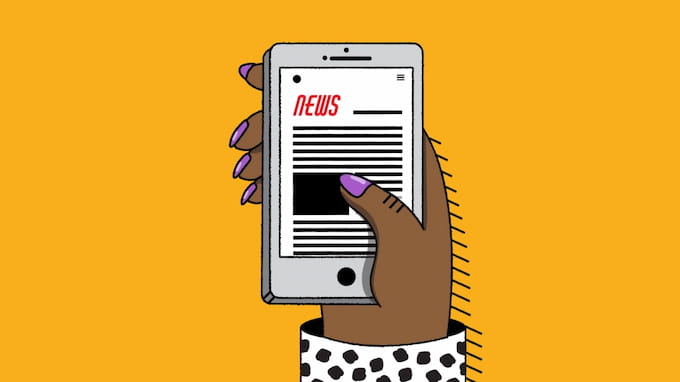The most recent digital technology is used in digital hearing aids. They may be altered to fit a person’s specific requirements and level of hearing loss. This is essential since everyone experiences hearing loss differently. Speech amplification, distracting background noise reduction, feedback suppression, and automated programming for all environmental scenarios are all features of digital hearing aids.

What Is Digital Hearing Aids?
As the picture of hearing aids shows, digital hearing aids are devices that are meant to assist individuals who suffer hearing loss by boosting the sounds that they hear. The majority of hearing aids have numerous electronic components that are comparable to one another:
- A microphone that can take up sound.
- Circuitry is known as an amplifier that boosts the volume of the music.
- The amplified sound is sent into the ear canal via a small loudspeaker, which acts as a receiver.
- Batteries are used to power the various electronic components.
- Hearing aids may be differentiated from one another based on their design, the kind of amplification technology (analog or digital), and other features such as wireless connection and software programs.
Some digital hearing aids also include earmolds or earpieces, which are designed to improve the quality of sound by directing the flow of sound into the ear. When choosing a hearing aid, it is important to consider the kind and degree of the wearer’s hearing loss, as well as their listening habits and lifestyle.

Digital hearing aids are designed to particularly magnify sounds that are vital for communication while simultaneously reducing frequencies that might be considered disruptive to the user’s ability to hear without difficulty. Digital hearing aids built in the last several decades have this function totally automated.
How do Digital Hearing Aids Work?
Different from the old hearing aids, digital hearing aids are a great option for those who have trouble hearing. They strive to minimize any background noise and provide an enhanced sound of speech, which results in ideal listening settings being created. The following process will illustrate how digital hearing aids function:
Step 1:
An analog-to-digital converter receives the analog signal in the air, which is collected by a microphone. After the signal has been converted to digital code, it is next processed by very sophisticated computers to perform a variety of tasks, such as minimizing background noise and boosting voice sounds. Each person’s audiogram and needs are taken into account while altering the input sound.
Step 2:
Once the signal has been processed, it is then sent through a second AD converter, which converts it back into an analog format. This allows the signal to be sent through the amplifier, which makes the sounds louder, and then down into the inner ear canal, which causes the eardrum to vibrate. Either the sound waves are sent by a tube that is inserted into the ear canal and then into the ear canal itself, or they are transmitted through a receiver that is placed in the ear canal and functions similarly to a loudspeaker.
Step 3:
Artificial intelligence in digital hearing aids allows them to learn on the job and discern between speech and noise. They can achieve the ideal hearing level for the user not just in a very little amount of time – literally milliseconds – but also at a rate of millions of operations per second.
Step 4:
The hearing aid’s software and firmware may be updated to make it more compatible with future technology.
Step 5:
Your hearing aid may be linked to a wide variety of other devices using digital technology and Bluetooth, allowing you to experience improved hearing in even the noisiest and most distracting environments.

Significant Features of Digital Hearing Aids
Digital hearing aids may contain capabilities that assist with communicating in a variety of settings, such as:

Directional microphone
It is possible that the directional microphone will assist you in communicating in loud surroundings. They raise a louder volume of the sound that is coming from a certain direction in comparison to the sound originating from other directions. When the directional microphone is turned on, the sound in front of you (conversation taking place face-to-face) is amplified to a higher degree than the sound coming from behind you.
Noise reduction
The function of noise reduction is to lessen the amount of distracting background noise in comparison to the sounds that you are attempting to hear.

Telephone switch
To improve your hearing when on the phone, you may use a T-coil setting on the telephone switch, which gives you the option to go from the regular microphone setting to the T-coil configuration. It is required that all wired telephones be compatible with hearing aids. When using the T-coil option, ambient noise is masked and the sound coming from the phone is amplified instead. This will also switch off the microphone on your hearing aid, allowing you to speak without the whistling sound coming from your hearing aid.
Wireless connectivity
It is possible for a hearing aid to receive streaming audio (for example, music or phone calls) and for the user to alter the settings of the hearing aid if it is equipped with a wireless connection.
Connection to smart devices
A superior signal-to-noise ratio is made possible by the ability to link digital hearing aids to smartphones and other Bluetooth peripherals, greatly improving speech detection. The hearing aid may function as your personal assistant and mimic “Alexa” or “Google Play” with only a single touch. Digital hearing aids may wirelessly stream music and audio from smartphones or tablets.

Your digital hearing aids may remotely receive voice from remote microphones or partner microphones. When a companion mic is worn next to you, everything they say can be wirelessly sent up to 10 meters to your hearing aids. The microphone may function as a table mic and be set up on a table, for example, at a restaurant, and the voices surrounding the table are similarly broadcast to the hearing aids.
Hearing Aids Picture: Types of Digital Hearing Aids
These innovative medical devices are incredible. They transform the sound waves into something that resembles computer code. Then these kinds of hearing aids help increase their volume. More information is included in the code than with an analog hearing aid. It also takes into account the sounds’ pitch, loudness, and direction. Small yet powerful, digital hearing aids may be easily adjusted manually or automatically in certain cases.

The following are the top three types of digital hearing aids:
In-the-ear (ITE) hearing aids
The outer ear is where in-the-ear (ITE) hearing aids are inserted. The electronics will be contained in a straightforward hard plastic casing. Adults and older individuals benefit more from these sorts of hearing aids.
In-the-canal (ITC) hearing aids
Hearing aids that are placed in the ear canal, or even completely hidden, are known as in-the-canal (ITC) devices. Only your particular ear canal will suit the ITC hearing aid. The ITC hearing aid comes in a smaller size that is even more discreet. With moderate to severe hearing loss, they work best. Because of their size, they could be a little more challenging to modify.
Behind-the-ear (BTE) hearing aid
A rigid plastic shell surrounds a behind-the-ear (BTE) hearing aid. The sounds will be directed into the ear through a plastic mold that fits directly into the outer ear. The BTE hearing aid is also available in smaller sizes. A thin tube will go further into the ear, and they fit nicely inside there. The best hearing aid for preventing ear wax accumulation is this particular model. It’s OK to use a BTE for moderate to severe hearing loss.
Your audiologist will be able to weigh the available alternatives and decide which is best.
What’s Better: Digital Hearing Aids Vs Analog Hearing Aids
Analog Hearing Aids
Analog hearing aids are becoming less popular. They do this by amplifying all sounds – both speech and noise – in the same manner, which results in continuous sound waves having a greater volume.
Some types of analog hearing aids are equipped with a microchip that may save numerous program settings for usage in various listening contexts, such as whether the wearer is in a quiet setting (like a library) or a loud setting (like a concert hall) (restaurant or soccer field). Pushing a button on the hearing aid allows the user to adjust the settings accordingly if there is a change in the surrounding acoustic environment.

Digital Hearing Aids
Nowadays, most people use digital hearing aids. They transform sound waves into digital impulses and provide a precise copy of the original sound, but otherwise, they are identical to analog programmable aids in every other respect. Digital hearing aids are equipped with microchips that can analyze speech as well as other ambient noises and save different program settings.
Digital hearing aids are capable of doing more complicated sound processing during the amplification process. This may improve performance in specific circumstances, such as the decrease of background noise and whistles. They also offer more flexibility in the hearing aid programming, which allows the sound that they broadcast to be tailored to the requirements of a particular pattern of hearing loss.
The Bottom Line
Hope this article can show you an overall picture of hearing aids. You won’t need much time to become used to using your digital hearing aids after the first learning curve. You may sometimes be able to try a hearing aid out before deciding to use one permanently. Spend some time getting adjusted to your hearing aid and communicate with your audiologist as you go.
Above are the best sharing about “digital hearing aids” from Wapolabs. Hope you are satisfied with this information.
Wapolabs USA
- Address: 1301 K Street NW Washington, D.C., U.S. 20071
- Phone: 0190-8286
- Email: [email protected]
- Twitter: https://twitter.com/wapolabs
- Instagram: https://www.instagram.com/wapolabs/
